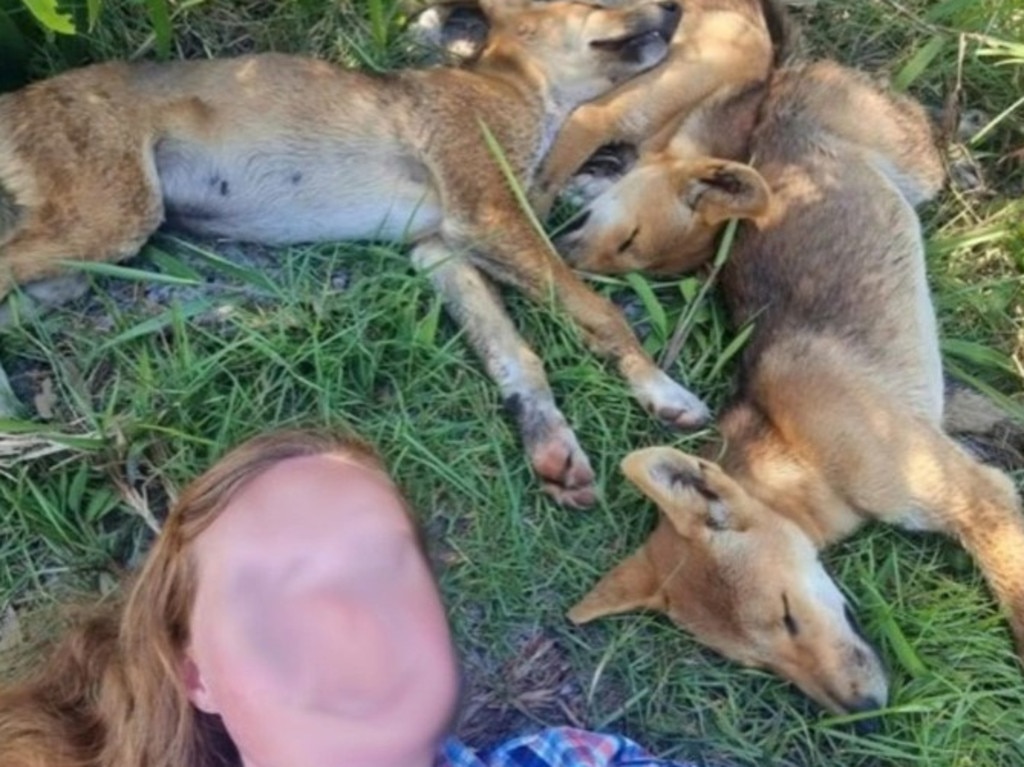Opinion: Humans to blame as dingoes pay the price on K’gari
A K’gari dingo fattened to 17kg by humans breaking the rules and feeding it has been “humanely euthanised”. There is something seriously out of whack about this, writes Kylie Lang. VOTE NOW

The dingo fattened to 17kg due to humans breaking the rules and feeding it has been “humanely euthanised”. There is something seriously out of whack about this.
Humans create the problem and the animal pays the price.
The leader of the pack that attacked a 23-year-old woman as she was running on the beach at K’gari on Monday was put down as calls to cap tourist numbers fell on tone-deaf Queensland Government ears.

The dingo population is said to be 200 strong, yet the island draws 400,000 visitors per year. It is obvious where the responsibility lands – on the interlopers who outnumber the inhabitants 2000 to one.
Yet too many people are ignoring warnings that are both visible and valid. They’re feeding the wild dogs, trying to get up close for selfies, camping in unfenced areas and leaving food scraps, fish and bait lying around, among other stupid ideas.
While I feel for the woman set upon earlier this week – it must have been terrifying for her, and with 30 bite marks her recovery will be slow – the advice is also clear on running.
Don’t do it. Running or jogging can trigger a negative dingo interaction.
People are told to always walk in groups, and keep their children close.
Dingoes might resemble cute, domesticated pets but they’re not.
The Department of Environment and Science spokesman who said the pack leader had been “humanely euthanised” also said it had “lost its natural wariness of people”.
No prizes for guessing the reason.
The dingo weighed 17kg, indicating people had been feeding it.
“It was also clear from its behaviour that it had become habituated, either by being fed or from people interacting with it for videos and selfies,” the spokesperson said.
“Entering campsites or loitering around people is not normal dingo behaviour.”
And there you have it – human intervention of the worst kind.
As Queensland Parks and Wildlife officer Linda Behrendorff told The Courier-Mail, it is wrong to be “constantly blaming the dingo” when people are putting the animal “in a position that it will get into trouble”.
However, Premier Annastacia Palaszczuk has ruled out capping tourist numbers. Could this be about the 400,000 votes she’s not willing to risk as her popularity plummets ahead of the 2024 election?

The island’s Butchulla people as well as environmentalists, academics and the Fraser Coast mayor all support the restriction of visitor numbers during peak periods.
This includes the March to May mating season and June to August when mothers are hunting for food for their newborns.
During these times dingoes can be aggressive, with each other and with people, according to the government’s parks and forests website.
But read on and you have to wonder when exactly it would be reasonable for unchecked numbers of humans to descend on the World Heritage-listed site. From September to November, pups are learning to hunt, and if food from humans is available they may not learn natural hunting skills. “Adult dingoes may regard humans as competitors for that food and become aggressive,” the website states.
From December to February, pups learn pack rules and show aggression to gain dominance. “Young dingoes will try to dominate people, especially children.”
These facts aside, Ms Palaszczuk says it is up to individuals visiting the island to do the right thing. How’s that working out so far, Premier?

Cheryl Bryant from Save Fraser Island Dingoes says “human ignorance and interference” have caused the problems on K’gari.
“If we are dingo-smart and adhere to very basic safety measures when entering their territory, everybody wins,” Ms Bryant says.
She says people who fail to do so should receive substantial fines.
“Tourists are fined for feeding, and rightly so, but parents who leave their children unsupervised, which is a regular occurrence, or ignore the rules, are not held accountable. But the dingo is sentenced to death.”
People don’t go to K’gari on a whim.
They need to catch a vehicle barge if they want to self-explore beyond Kingfisher Bay Resort, and they must apply beforehand for driving and camping permits.
If people can’t abide by the rules – designed to protect them as well as precious wildlife – then they should holiday elsewhere.
Tightening up tourist numbers might be an unpalatable option for an increasingly unpopular Premier, but it just makes sense.
Kylie Lang is associate editor of The Courier-Mail
kylie.lang@news.com.au
More Coverage
Originally published as Opinion: Humans to blame as dingoes pay the price on K’gari





